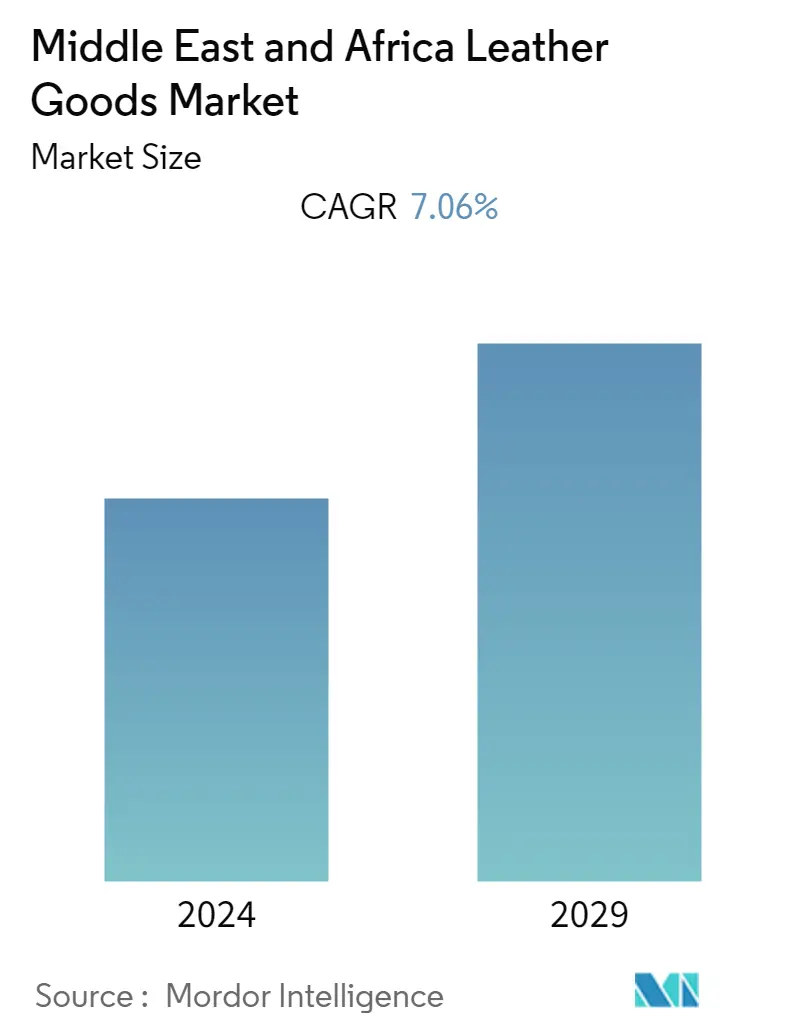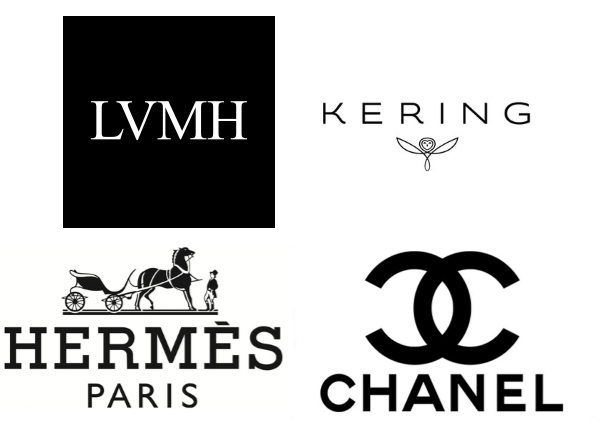
| Study Period | 2019 - 2029 |
| Base Year For Estimation | 2023 |
| Forecast Data Period | 2024 - 2029 |
| Historical Data Period | 2019 - 2022 |
| CAGR | 7.06 % |
| Market Concentration | Low |
Major Players
*Disclaimer: Major Players sorted in no particular order |
MEA Leather Goods Market Analysis
Middle East & Africa Leather Goods Market is forecasted to reach USD 21.23 billion by 2025growing at a CAGR of 7.06% during the forecast period (2020- 2025).
- Innovationin design and the use of exotic leather to manufacture products have enabled manufacturers to cater to the demand for high-end and premium customers. Also, key market players are focused on designing personalized and customized leather goods for attracting consumers to spend more on exclusive products.
- The adoption of omnichannel retailing all over middle east & africa will be one of the significant factors that are expected to drive leather goods industry growth. Product improvement, use of social media platforms to increase consumer engagement and awareness about product launches, and the adoption of appropriate distribution channels are some of the strategies adopted by leather handbag manufacturers to promote their products.
MEA Leather Goods Industry Segmentation
Middle East leather goods market has been segmented by type, distribution channel, and geography. By type, the market can be segmented into footwear, luggage, and accessories, and by distribution channel, the market can be segmented into offline and online retail stores.
| Footwear |
| Luggage |
| Accessories |
| Offline Retail Stores |
| Online Retail Stores |
| Middle East & Africa | United Arab Emirates |
| Saudi Arabia | |
| Egypt | |
| Turkey | |
| South Africa | |
| Rest of Middle East & Africa |
Middle East & Africa Leather Goods Market Size Summary
The Middle East and Africa leather goods market is experiencing significant growth, driven by innovation in design and the use of exotic leathers to meet the demands of high-end consumers. Manufacturers are increasingly focusing on personalized and customized products to attract consumers willing to invest in exclusive items. The adoption of omnichannel retailing is a key factor propelling the industry's expansion, with strategies such as product improvement, social media engagement, and strategic distribution channels playing a crucial role in promoting leather handbags. The region is poised to become a hub for leather manufacturing, offering global brands opportunities for acquisitions and partnerships to control supply chains and enhance product quality. This shift is supported by companies like Al Khaznah Tannery in the UAE, which is expanding its production and exports to various international markets.
In Saudi Arabia, the demand for luxury leather goods is fueled by high purchasing power and a preference for products that signify social status. This has led to the entry of international brands like MCM, which opened its first boutique in the country to capitalize on this market potential. The presence of advanced tanneries, such as Al-Ahli Leather Factory Company Ltd., supports the production of high-quality leather goods, contributing to the region's export capabilities. The market is further influenced by the expansion of international players like Kering SA, LVMH, Chanel SA, and Hermès International SA, who are actively pursuing mergers, acquisitions, and partnerships to strengthen their market position. These strategies aim to optimize offerings and enhance production processes, ensuring continued growth and dominance in the Middle East and Africa's leather goods sector.
Middle East & Africa Leather Goods Market Size - Table of Contents
1. MARKET DYNAMICS
- 1.1 Market Drivers
- 1.2 Market Restraints
-
1.3 Porters 5 Force Analysis
- 1.3.1 Threat of New Entrants
- 1.3.2 Bargaining Power of Buyers/Consumers
- 1.3.3 Bargaining Power of Suppliers
- 1.3.4 Threat of Substitute Products
- 1.3.5 Intensity of Competitive Rivalry
2. MARKET SEGMENTATION
-
2.1 By Type
- 2.1.1 Footwear
- 2.1.2 Luggage
- 2.1.3 Accessories
-
2.2 By Distribution Channel
- 2.2.1 Offline Retail Stores
- 2.2.2 Online Retail Stores
-
2.3 Geography
- 2.3.1 Middle East & Africa
- 2.3.1.1 United Arab Emirates
- 2.3.1.2 Saudi Arabia
- 2.3.1.3 Egypt
- 2.3.1.4 Turkey
- 2.3.1.5 South Africa
- 2.3.1.6 Rest of Middle East & Africa
MEA Leather Goods Market Research FAQs
What is the current Middle East & Africa Leather Goods Market size?
The Middle East & Africa Leather Goods Market is projected to register a CAGR of 7.06% during the forecast period (2024-2029)
Who are the key players in Middle East & Africa Leather Goods Market?
LVMH, Kering SA, Hermès International SA, Chanel S.A and Capri Holdings Ltd are the major companies operating in the Middle East & Africa Leather Goods Market.


